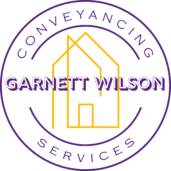If you are buying a second home from now on or are a buy-to-let landlord looking at a new property, this April has seen a significant change in stamp duty. For any additional residential property you buy there is a 3% surcharge which means you are going to have to pay more.
Stamp duty on a single property remains the same. So while properties up to £125,000 will have no stamp duty if it is the only residence, you’ll have to pay 3% if it is an additional one such as a holiday home. For second residential property owners the bands are as follows:
- Up to £125K the rate is 3%
- Between £125K and £250K the rate is 5%.
- Between £250K and £925K the rate is 8%.
- Between £925K and £1.5 million the rate is 13%.
- Above £1.5 million the rate is 15%.
With higher property prices in the South of England, this obviously means that many people in the home counties will be a paying a larger premium if they decide to buy a second home. Buy-to-let landlords in the region are going to be hit hard and many may well think twice about whether they are going to invest in new properties in the future.
It applies to anyone living in the UK and even if your first home is abroad you will still be stung with the additional tax. Naturally there was a rush to buy properties before the stamp duty change come into effect on 1st April 2016 and deals were still being done right up to the last minute.
The stamp duty is paid on a tiered basis which means that you only pay the rate applicable to the value that falls into a particular bracket. Let’s say you live in Southend and want to buy a second home valued at £300,000; the standard stamp duty pre 1st April would have cost you £5,000 but with additional rates you’ll be looking at paying out £14,000 in total. A significant difference.
One area where it doesn’t apply is if you are replacing your main residence. So if you live in a house and have a second holiday home but decide to sell up the home where you live permanently and replace it, then you only pay the standard stamp duty. It’s not counted as an additional property.
If you have not sold your house by the time you buy the new one you will be charged the stamp duty but as long as you sell within 3 years the HMRC will refund any excess amount paid. The same period applies if you sell the home and can’t move into a new main residence straight away – you have three years to buy a home without incurring the extra stamp duty.
There are plenty of other issues such as what happens when two names are on the mortgage and one party has a second home or what happens if a couple divorce and the new buyer still has their name on the deeds of the old home. One possible loop hole which has been touted in the news recently is that you can get round the surcharge by setting up a limited company though this might well be viewed as aggressive tax avoidance.
There are areas where this increase in stamp duty becomes a little complicated which is why it always advisable to get the advice of a qualified conveyancing solicitor. If you are buying a second home after the April change, then getting the right information to make a more informed choice could save you money.
